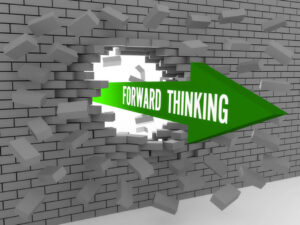
Learning to Take Bad News / A Manager’s Advice for Employees in the Hot Seat
In the early days of my career as a manager at a product development company, I got a Slack message from my boss: “Did you

In the early days of my career as a manager at a product development company, I got a Slack message from my boss: “Did you

In the ever-evolving job market, hiring managers and recruiters are on the lookout for standout skills that set candidates apart. From highlighting proactivity and agility

In a world where technology is evolving at lightning speed, staying relevant is a challenge for both employees and employers. As industries adapt to new

Terms like recruitment and talent acquisition are used synonymously, but they aren’t the same. Recruitment is a short-term fix for most “big-picture” employers, whereas talent

How to Hone Your Professional Career Narrative (And Why It Matters) Have you met these executive jobseekers? What do they all have in common when

What is your leadership DNA? It is your authentic self. The concept of authentic leadership is often bantered about. In my experience of working with leaders

The enterprise and the workplace are increasingly influenced by technology and technology-driven processes. With digital upskilling becoming an increasing priority, this often comes with a

Hey, all. 2019 graduates. Recent 2020 graduates. Early-hires. Young professionals. Those who have been laid off. Those in furlough. Those on unemployment. I know it

There are many challenges that all managers face. Whilst these challenges can arise at any point in a manager’s career, they can be particularly prevalent
Can you work with your spouse and make it work? It’s common nowadays to hear someone dedicated to their career say they are “married to
I recently attended a talk on personal branding given by Dorie Clark, bestselling author of “Stand Out,” at the Library of Congress in Washington D.C.
You are in your 30s, they say. You should already know what you want from this life and your career, they say. Oh, really? According
In the beginning was the Word. Have you ever wondered why some writers can’t hook us while others simply toy with your emotions? Why do
Every year, TV series creators bring us new career women to admire. Instead of tough, cutthroat caricatures, writers create complex women who thrive in a
Digital Skills: Is E-Learning Enough? Digital skills are becoming increasingly essential for future-proofing your career and not least because of the rapid proliferation of digital
Do you have a scientific turn of mind? Are you obsessed with fine detail? Are you looking for a fulfilling, rewarding career with great prospects,
Richard Branson lives large on social media, weaving stories about a life lived on the edge in <140 characters. Jack Dorsey tweets of past presidents,
I’m consistently amazed by how unaware the average job seeker is of how to establish a positive first impression on a phone interview. I hear
Is it time to do a 180 degree shift on the subject of time management? So much has been written on how to manage one’s
If you’re an engineer, you’re automatically in a prime negotiating position when it comes to commanding a good salary–it’s a simple matter of supply and
People with goals achieve more and are more successful — a lot more successful — than peers without them, whether they’re scientists, students, or corporate
In a particularly creative working session with a young product designer, we arrived at what seemed like a terrific idea with a novel implementation. We’d
Work stresses people out — fear of failing, pressure to achieve, having to reply on others for our own success, overload, self-doubt and more… In
Stephanie Leffler, the dynamic, mission-driven CEO of CrowdSource, carefully controls where her time goes. For years, she’s kept a thorough action item list against her
Long before texting brought us LOL, BTW, CU, and TTYL, organizations used acronyms as communication short cuts. Unlike the text substitutes for benign greetings, laughs